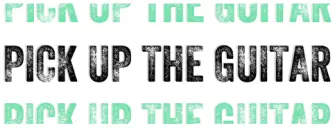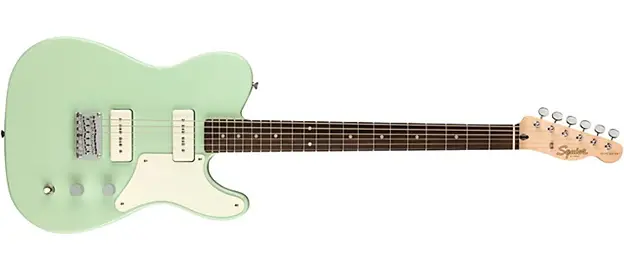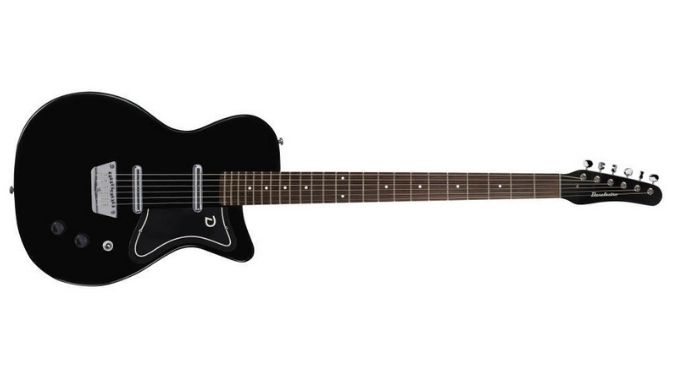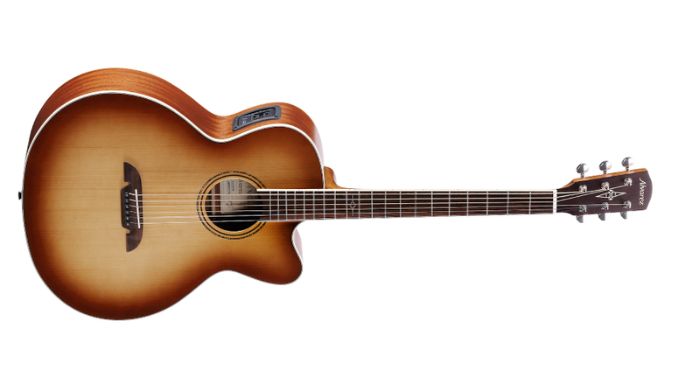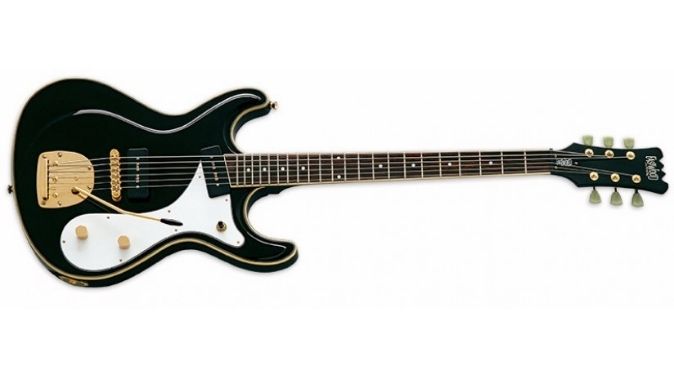A Unique Axe, Fifty Years in the Making
The Fender Pawn Shop Bass VI is the modernized reincarnation of the Fender Bass VI, which first appeared in 1961. Tuned a full octave below a standard guitar and owing its good looks to the Jazzmaster and Jaguar models, the Bass VI occupied a sonic estuary between the traditional bass and the baritone guitar. The original Bass VI was discontinued in 1975, but not before enjoying a small cult following which included Joe Perry of Aerosmith, who used the Bass VI on the 1976 track, Back in the Saddle.
Are you looking to expand your sonic horizons? Would you like to meet one of the most interesting axes you’ve never played? Then check our five reasons the Fender Pawn Shop Bass VI should be on your list of instruments to play and own.

1. The budget reincarnation is more playable than the budget-busting classic.
If you are fortunate enough to track down an original Fender Bass VI, it will set you back thousands of dollars. Fortunately, you can get a gently used Pawn Shop Bass VI for around a quarter of the price! The updated version features the same octave-down, E to E tuning, alder body, maple neck, rosewood fingerboard, and the same 21 medium-jumbo frets as the original.
Thankfully, the Pawn Shop Bass VI also offers the following updates:
The fingerboard radius has been slightly flattened, from 7.25 inches to 9.5 inches, resulting in a more modern feel.
The original three single coil format has been replaced with two higher-output singles and a JZHB humbucker in the bridge.
The scale length has been slightly extended to 30 inches, resulting in a more natural feel and intonation.
The funky 60’s style pickup switches have been replaced with a Strat-style five-way selector.
2. Useful & Unique Tone.
The Fender Pawn Shop Bass VI occupies a unique sonic landscape because of its low range and real-world-ready tones.
True to the original Bass VI, the Pawn Shop Bass VI delivers low end that would be right at home in a surf rock setting or a tic-tac bass line.
However, the Bass VI is also a natural fit for harder-hitting sonic settings. When distorted, Bass VI invites you to dial in gritty tones. Thanks to the addition of the updated single coils and the bridge position humbucker, the Pawn Shop Bass VI offers a higher output sound than the original. If you’ve got a passion for rock or metal, give this axe a spin and see what sort of mosh pit-motivating tunes pour from your amp.
Though its distorted tones are great, users will be most pleasantly surprised by the Bass VI’s clean tones. Despite being an octave lower than its more famous production line cousins, the Stratocaster and Telecaster, the Pawn Shop Bass VI conjures up clean tones that ought to make the Fender family of instruments proud. The sound is well-balanced, responsive, and offers just enough sparkle.
So, when you get your hands on the Fender Pawn Shop Bass VI, have your metal and alt-rock fun. But before you unplug, turn off the distortion and play through a few arpeggios and some mellow jazz chords. You will find yourself closing your eyes, locking into a grove, and losing track of time.
3. You Simply Can’t Get More Low End With Six Strings.
Pick up your favorite standard guitar and start unwinding your tuning pegs. Your strings will most likely fall off before you get anywhere near one whole octave down. This is baritoneguitar.org, so go ahead and try this same exercise with your favorite baritone guitar. Tune your strings down 2.5 or 3.5 steps and try to play your favorite tune.
The result?
Chances are your once awesome axe sounds like an instrument made with a couple of rubber bands and an old shoebox.
If you want more low-end than a typical baritone can offer without compromising tone, your options are limited. You can learn to play a seven-string or you can pick up a Fender Bass VI. For a gentle learning curve and affordability, it’s hard to beat the Bass VI.
4. Ease of Play That Will Satisfy Bass Players, Baritone Enthusiasts, and Standard Guitar Slingers.
Thanks to its 9.5-inch radius fingerboard and C-shaped neck, standard guitar players will experience only a short period of adjustment to the Pawn Shop Bass VI. Conversely, many bass players will find that their fingers dance across the frets with ease.
Those proficient in both bass and standard guitar will be in a wonderful position to work the Bass VI to its full potential, as one player can easily work in distinct bass lines, chords, and melodies.
Now, at this point, you might be thinking, “Wow, the Bass VI is half bass and half guitar!” This is not the case. To be more accurate, the real breakdown is more like two-thirds bass and one-third baritone. Getting the full potential out of this instrument requires you to be conscious of this breakdown.
5. Variations to Fit Your Budget (And Your Patience).
Sadly, the Pawn Shop Bass VI is no longer in production. Used models have slowly increased in price and getting your hands on either requires some methodical searching of Amazon, Guitar Center, and of local mom-and-pop shops.
If you don’t want to hunt for or pay the price for a Bass VI, you can check out the Squire Vintage Modified Bass VI. The Squire version features a basswood body instead of alder, three single coils, and a series of on-off switches instead of a five-way pickup selector.
If the mention of “squire” makes you wince, you should know that the vintage modified series are produced to higher standards than the “Affinity” line of Squires you can find for around $69.99 online. The vintage modified series is geared towards the budget-conscious musician (which, if we are honest, is or should be most of us). If you are looking for niche tones at a price that will leave you with some walking-around cash, check out the Squire Vintage Modified Bass VI.
Conclusion
The Pawn Shop Bass VI and its budget-minded cousin, the Squire Vintage Modified Bass VI, are neither baritone nor standard bass guitars. As such, they won’t be for everyone. You should consider the Bass VI if you are…
- In a rock or metal outfit and looking to add a unique sound to some of your tracks.
- Interested in surf rock or tic tac country lines.
- In the business of creating unique sonic landscapes for a progressive band or for commissioned works, like soundtracks.
- A musician comfortable with bass and guitar technique, looking for ways to blend both into a single playing experience.
If you looking for a true baritone (not a baritone bass hybrid) check out our full list of electric baritone guitar reviews.
Is the Fender Pawn Shop Bass VI an instrument you can see yourself using and enjoying? Have you ever owned or played a Bass VI? Do you have any thoughts or questions on this post? If so, please scroll down and leave a comment.
You can learn more about the Bass VI and look for more pricing information by clicking on some of the affiliate links contained throughout this post.
Key Features & Specs
- Alder body
- 30″ maple neck in “C” profile
- Rosewood fretboard
- .24-.84 gauge Strings
- JHZB humbucker pickup (bridge)
- Special Design Hot Jaguar single coil pickups in the neck and middle positions
- Five-way Strat-style pickup switching
- Master volume and master tone controls
- Vintage-style adjustable six-saddle bridge with floating tremolo Vintage-style tuners
